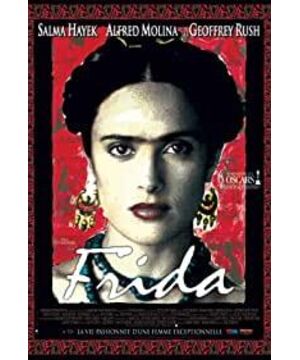The film portrays Frida as a vulnerable woman, both physically and mentally. On the body, she was wrapped in plaster, like a puzzle piece that was dismantled and disassembled by the doctor, and rotted a little under the erosion of time. Spiritually, she fell into the shackles of love. In the dreamlike Paris, while making love with others, she wrote letters to her romantic husband Diego to tell her loneliness. She has always been fettered. After witnessing her husband having sex with her sister, she seemed to break her hair resolutely. But this surprising short hair style only appeared for a moment, as if it symbolized the free and easy moment. Then, she recklessly plunged into the rolling red dust.
Frida's fragility makes her art, and her paintings come from her suffering, from her heart that is always in pain. When she heard that the boy of her first love was about to leave her to go to Europe to study, she grabbed the pencil hard and drew butterflies on her plaster. Her aching heart urged her to express and create, as if giving birth to a baby. The pain is delivered into a shape, color, palpable painting. She loves these paintings as much as she sympathizes with her own pain. Therefore, she did not hesitate to quarrel with Diego, dragged her immobile body to her art exhibition, merged with the pain of the exhibition, and burned herself into a glass of hot whiskey.
The last scene is the most painless painting in the film, not even striking red: she grows green branches, is entangled in flames, and sleeps peacefully with her heart that feels pain.
View more about Frida reviews











